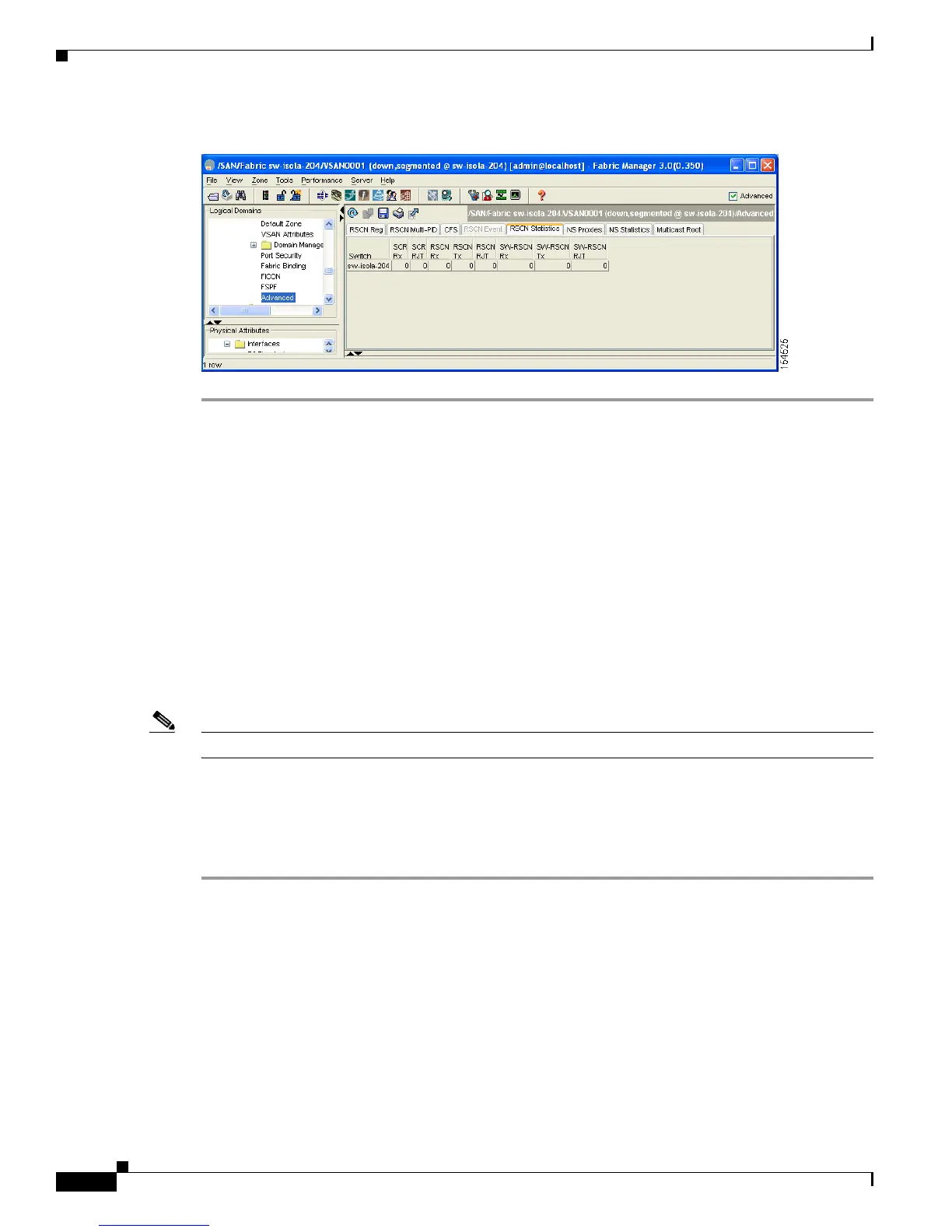Send documentation comments to mdsfeedback-doc@cisco.com
34-6
Cisco MDS 9000 Family Fabric Manager Configuration Guide
OL-17256-03, Cisco MDS NX-OS Release 4.x
Chapter 34 Managing FLOGI, Name Server, FDMI, and RSCN Databases
RSCN
Figure 34-4 RSCN Statistics
About the multi-pid Option
If the RSCN multi-pid option is enabled, then RSCNs generated to the registered Nx ports may contain
more than one affected port IDs. In this case, zoning rules are applied before putting the multiple affected
port IDs together in a single RSCN. By enabling this option, you can reduce the number of RSCNs. For
example: Suppose you have two disks (D1, D2) and a host (H) connected to switch 1. Host H is registered
to receive RSCNs. D1, D2 and H belong to the same zone. If disks D1 and D2 are online at the same
time, then one of the following applies:
• The multi-pid option is disabled on switch 1: two RSCNs are generated to host H—one for the disk
D1 and another for disk D2.
• The multi-pid option is enabled on switch 1: a single RSCN is generated to host H, and the RSCN
payload lists the affected port IDs (in this case, both D1 and D2).
Note Some Nx ports may not understand multi-pid RSCN payloads. If so, disable the RSCN multi-pid option.
Configuring the multi-pid Option
To configure the multi-pid option using Fabric Manager, follow these steps:
Step 1 Expand a fabric, expand a VSAN and then select Advanced.
You see the VSAN advanced configuration in the Information pane.
Step 2 Click the RSCN Multi-PID tab.
You see the screen shown in Figure 34-5.

